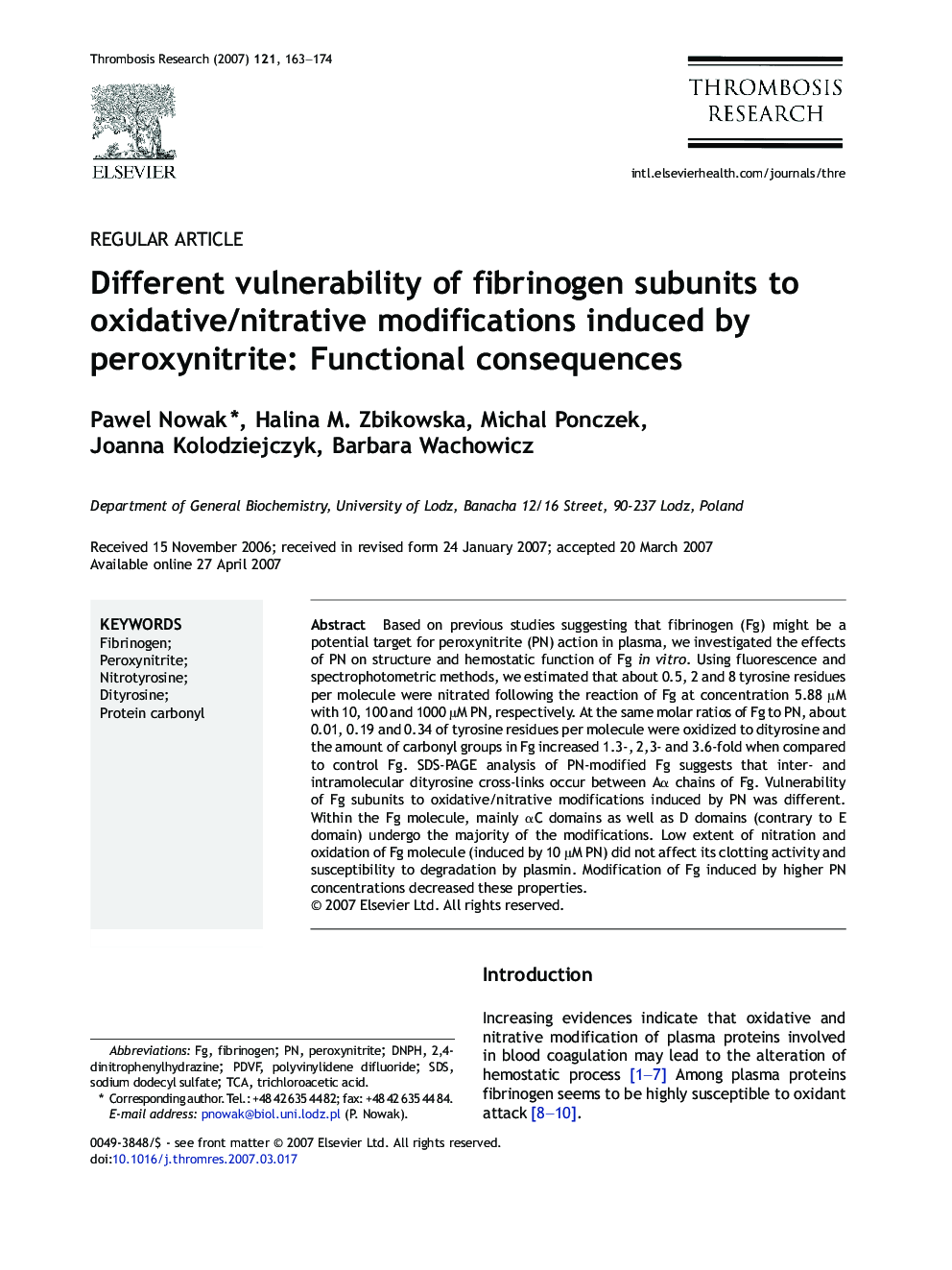| Article ID | Journal | Published Year | Pages | File Type |
|---|---|---|---|---|
| 3029894 | Thrombosis Research | 2007 | 12 Pages |
Based on previous studies suggesting that fibrinogen (Fg) might be a potential target for peroxynitrite (PN) action in plasma, we investigated the effects of PN on structure and hemostatic function of Fg in vitro. Using fluorescence and spectrophotometric methods, we estimated that about 0.5, 2 and 8 tyrosine residues per molecule were nitrated following the reaction of Fg at concentration 5.88 μM with 10, 100 and 1000 μM PN, respectively. At the same molar ratios of Fg to PN, about 0.01, 0.19 and 0.34 of tyrosine residues per molecule were oxidized to dityrosine and the amount of carbonyl groups in Fg increased 1.3-, 2,3- and 3.6-fold when compared to control Fg. SDS-PAGE analysis of PN-modified Fg suggests that inter- and intramolecular dityrosine cross-links occur between Aα chains of Fg. Vulnerability of Fg subunits to oxidative/nitrative modifications induced by PN was different. Within the Fg molecule, mainly αC domains as well as D domains (contrary to E domain) undergo the majority of the modifications. Low extent of nitration and oxidation of Fg molecule (induced by 10 μM PN) did not affect its clotting activity and susceptibility to degradation by plasmin. Modification of Fg induced by higher PN concentrations decreased these properties.
